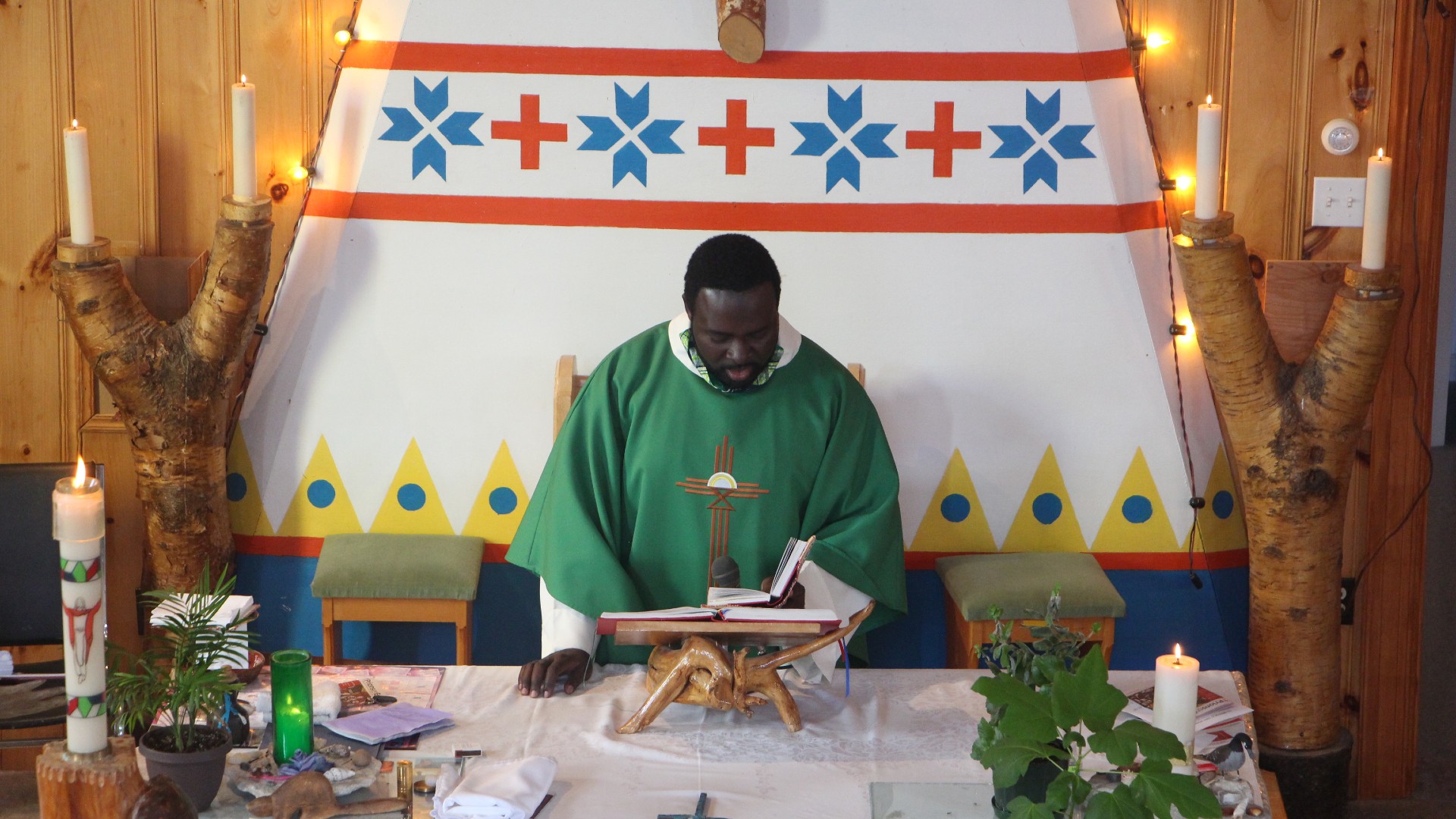From hiring to moving: the process
There are three ways for Catholic priests to come from abroad to work in Canada.
The priest’s placement is temporary in all these instances. He must get approval from his bishop back home (or from his religious order, in the case of a missionary priest) to keep working in the country.
To make the move permanent, his bishop at home and the one in Canada must agree to formally transfer him from one diocese to the other.
Confused? Understand how the Catholic church works
After having spent a minimum of three years in the country, priests can apply to become permanent residents. Some may also decide to later seek Canadian citizenship, a choice that is theirs to make. “We cannot force them, but we help them to have it if they decide [to get it],” explained Serge Tidjani, a Benin-born priest and chancellor of the Gaspé Diocese.
Why Benin-born priest Serge Tidjani decided to become Canadian
Quebec’s unique selection criteria
Quebec has its own process for selecting which migrants it takes in. Priests that want to work there must first get a Quebec selection certificate before they can apply for federal work permits. This document confirms that the provincial government has accepted to welcome the applicant.
Some dioceses (such as Gaspé) know this process well and actively help their new priests with getting their certificate, Tidjani said.
Missionaries or migrant workers?

“If a priest or a nun comes here from another country to work, are they coming as part of their mission or are they an immigrant?”
— Pamela Klassen
Professor in the Department for the Study of Religion at the University of Toronto
We shouldn’t see these priests as just missionaries, we should also consider them to be foreign workers, said Pamela Klassen, professor in the Department for the Study of Religion at the University of Toronto.
“We’re a country of immigration,” she said. “If you just looked at the practice of workers coming from other countries to Canada, they’re immigrants.”
In fact, about one in four workers in Canada is an immigrant, according to a 2017 analysis of the Canadian immigration labour force by Statistics Canada. And last year’s annual report to Parliament on immigration shows that economic migration increased between 2015 and 2019, with as many as 196,658 people coming here for work.
Nnaemeka Ali, a Nigerian priest who works in Innu communities north of Sept-Îles, Que., said that priesthood isn’t the only sector that relied on migrants to solve a workforce shortage, especially in Northern Canada.
“I always hear about people saying, ‘ah in Côte Nord you have so many Black priests’,” Ali said. “That’s true,” he said, but he pointed out that there were nine Black teachers in Schefferville, a small town near Labrador, and Black nurses as well.
“If you compare it’s one priest, nine teachers, so there is a problem in the teaching sector, there’s a problem in the nursing sector, there are many layers,” he said.
Canada’s population is aging – especially in Quebec – and adults are having less and less children. It’s inevitable that more migrants will be needed to fill job vacancies across the country, Ali said. “It’s not going to stop now.”
If Canadians recognize the necessity of bringing doctors and nurses from abroad, then they shouldn’t take issue with the same thing happening for priests, he said. “If those ones are not problematic, why is it that this is a problem?”
Top photo © Émilie Warren

